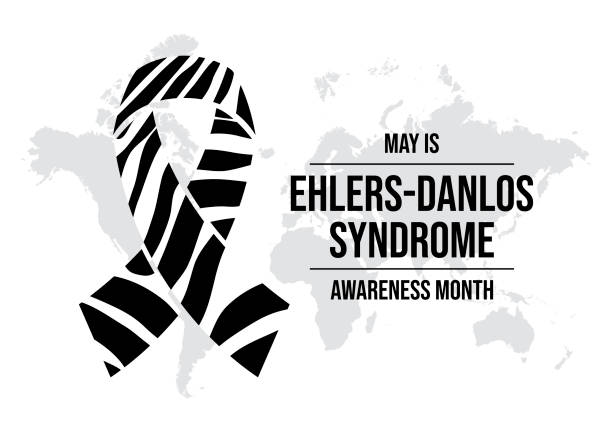Search by Color or Cause


May is Ehlers-Danlos Syndrome Awareness Month. Ehlers-Danlos syndromes are inherited in the genes that are passed from parents to child. This is often a result of genes that produce abnormal proteins or collagen. For example, collagen is the normal protein “glue” in a person’s tissues. Ehlers-Danlos affects this “glue. The color for Ehlers-Danlos Syndrome is zebra. Wear a zebra personalized or non-personalized awareness ribbon pin to honor Ehlers-Danlos Syndrome Awareness Month.
Ehlers-Danlos Syndrome Awareness Month educates that Ehlers-Danlos syndrome affects connective tissue, primarily the skin, joints, and blood vessel walls. Symptoms, for example, include overly flexible joints that can dislocate. In addition, it affects skin, causing it to be translucent, elastic, and easily bruised. In some cases, there may be dilation and even rupture of major blood vessels.
Ehlers-Danlos Syndrome Awareness Month focuses on awareness, education, outreach, and fundraising for Ehlers-Danlos syndromes. It also raises awareness for related disorders. Ehlers-Danlos Syndrome Awareness Month first began in 2006.
The Ehlers-Danlos syndromes (EDS) are a group of 13 heritable connective tissue disorders. The conditions are caused by genetic changes that affect connective tissue. In addition, each type of EDS has its own set of features. They each have distinct diagnostic criteria. Some features, in addition, are seen across all types of EDS, including joint hypermobility, skin hyperextensibility, and tissue fragility. The purpose of Ehlers-Danlos Syndrome Awareness Month is to make sure diagnosis is accurate and prompt.
Each type of EDS is associated with different symptoms and characteristics. Some symptoms are common across all types of EDS, such as joint hypermobility, pain, and fatigue. Other symptoms are only observed in specific types of EDS. Even within the same type of EDS, people can experience very different symptoms from each other.
There are also many other medical conditions that are often seen in people with EDS. These include types of dysautonomia and mast cell diseases.
Joint hypermobility means that a person’s joints have a greater range of motion than is expected or usual. Some people have joint hypermobility that does not cause them pain or other issues. However, some people with joint hypermobility also have joint instability. Joint instability occurs when the bones of a joint aren’t held in place securely. This can lead to joint subluxations, dislocations, sprains, and other injuries. In addition, joint instability can cause both acute and chronic pain, and interfere with daily life.
Joint hypermobility is observed throughout the body in most types of EDS, but hypermobility may be limited to the hands and feet in some types. Although joint hypermobility is observed across all types of EDS, not everyone with a type of EDS has joint hypermobility. You can read more about joint hypermobility here.
Skin hyperextensibility means that the skin can be stretched beyond the normal range. For example, skin extensibility, or skin stretchiness, is measured by pinching and lifting the skin on the volar surface (same side as the palm of the hand). It is pinched at the middle of the non-dominant forearm. Skin is hyperextensible if it stretches greater than 1.5 cm. Mild skin hyperextensibility may be observed in people with any type of EDS. More severe skin hyperextensibility, greater than 2 cm, is observed in certain types of EDS.
People with a type of EDS may also have other skin characteristics and symptoms. These include unusual skin texture, skin fragility, very thin skin, delayed wound healing, and abnormal scarring. Not everyone with a type of EDS has skin hyperextensibility or unusual skin characteristics.
Tissue fragility means that the body’s organs and other structures are more vulnerable to damage. Tissue fragility can, for example, present as easy bruising and poor wound healing in many types of EDS. Some types of EDS can also cause severe fragility of the skin, blood vessels, abdominal organs, eyes, gums, and bones.
Each type of EDS is caused by variants in specific genes that provide the instructions for making collagens and related proteins. Some types of EDS are associated with multiple different genes. The genetic cause(s) of hEDS have not been identified.
There are no disease-specific treatments for any type of EDS, so EDS is managed by addressing each person’s symptoms. The Ehlers-Danlos syndromes can cause a variety of symptoms in different areas of the body. Therefore, people with a type of EDS often require multiple providers in different specialties to manage their care. Even within the same type of EDS, two people may have very different symptoms and respond differently to different management strategies.